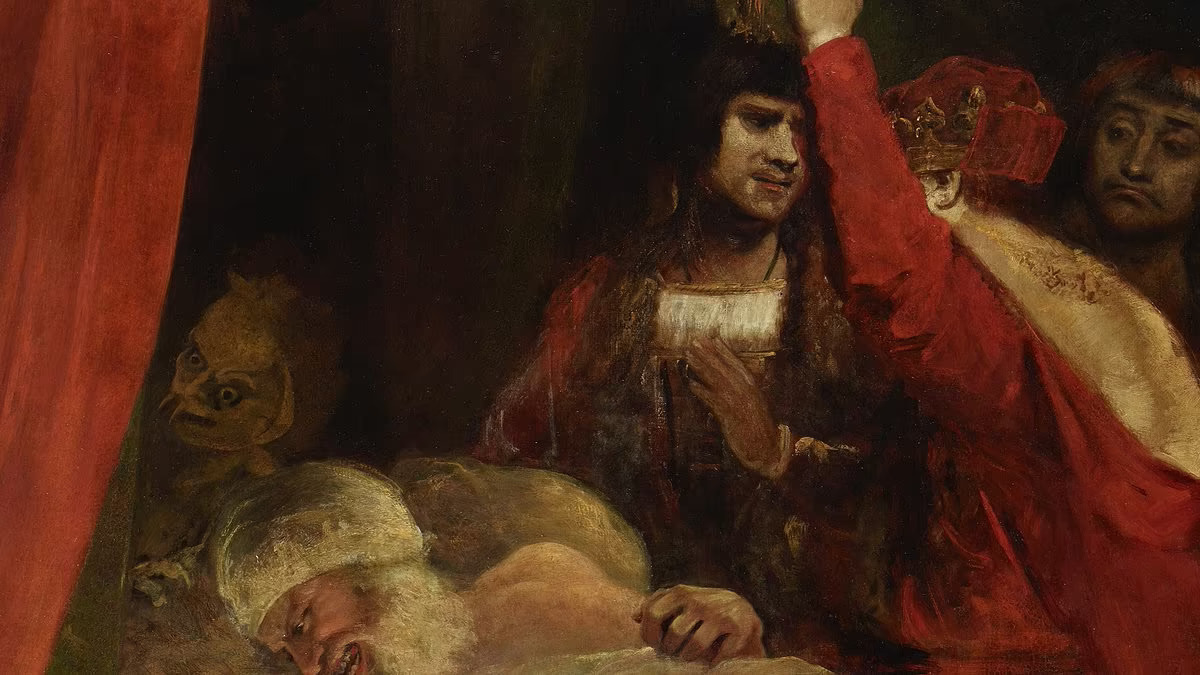
Cardinal Beaufort Demon—a name that sparks curiosity and intrigue. Who was this enigmatic figure, and why does his legacy continue to captivate us? Born into a powerful family, Cardinal Beaufort wielded immense influence during the 15th century. His life intertwined with pivotal historical events, from the Hundred Years' War to the Wars of the Roses. But there's more to his story than political maneuvering and ecclesiastical power. Legends and myths swirl around his name, painting him as a figure of both reverence and fear. Was Cardinal Beaufort truly a demon in disguise, or is this just a tale spun by history? Let's dive into 38 fascinating facts about this mysterious cardinal and uncover the truth behind the legend.
Key Takeaways:
- Cardinal Beaufort was a powerful and influential figure in medieval England, known for his political acumen, religious contributions, and financial support for charitable causes.
- Despite his complex and contradictory nature, Cardinal Beaufort's legacy continues to impact English history, leaving behind a lasting influence on education, charity, and the church.
Cardinal Beaufort: A Glimpse into His Life
Cardinal Beaufort was a significant figure in medieval England. His influence spanned politics, religion, and even military affairs. Here are some intriguing facts about his life and legacy.
-
Cardinal Beaufort was born in 1374, making him a contemporary of many notable historical figures.
-
He was the second son of John of Gaunt, Duke of Lancaster, and his mistress, later wife, Katherine Swynford.
-
His birth name was Henry Beaufort, but he later took on the title of Cardinal.
-
Beaufort was educated at Oxford University, where he studied theology and canon law.
-
In 1397, he became the Bishop of Lincoln, marking the beginning of his ecclesiastical career.
Political Influence and Power
Cardinal Beaufort's political influence was immense. He played a crucial role in the governance of England during a turbulent period.
-
He served as the Chancellor of England three times, a testament to his political acumen.
-
Beaufort was a key advisor to King Henry V, helping to shape the king's policies.
-
He was instrumental in negotiating the Treaty of Troyes in 1420, which aimed to end the Hundred Years' War.
-
Cardinal Beaufort was a member of the Regency Council for the young King Henry VI, guiding the kingdom during the king's minority.
-
His political maneuvers often put him at odds with other powerful figures, including Humphrey, Duke of Gloucester.
Religious Contributions
As a cardinal, Beaufort's impact on the church was significant. His religious contributions extended beyond his duties as a bishop.
-
In 1426, he was appointed Cardinal by Pope Martin V, a rare honor for an Englishman at the time.
-
Beaufort was a major benefactor of Winchester Cathedral, funding numerous renovations and expansions.
-
He founded several charitable institutions, including hospitals and almshouses, to aid the poor and sick.
-
Cardinal Beaufort was involved in the Council of Constance, which sought to resolve the Western Schism within the Catholic Church.
-
He played a role in the trial of Joan of Arc, supporting her condemnation as a heretic.
Military Involvement
Though primarily a religious and political figure, Cardinal Beaufort also had a hand in military affairs.
-
He financed several military campaigns during the Hundred Years' War, using his wealth to support the English army.
-
Beaufort's financial support was crucial in the Battle of Agincourt, one of England's most famous victories.
-
He organized and funded crusades against the Hussites in Bohemia, demonstrating his commitment to defending the faith.
-
Cardinal Beaufort's involvement in military matters earned him both admiration and criticism from his contemporaries.
-
Despite his clerical status, he was known to wear armor and lead troops into battle on occasion.
Wealth and Legacy
Cardinal Beaufort's wealth and legacy left a lasting impact on England. His financial acumen and philanthropic efforts were well-known.
-
He was one of the wealthiest men in England, amassing a fortune through various means, including land ownership and ecclesiastical revenues.
-
Beaufort used his wealth to fund numerous building projects, including the construction of Eton College.
-
His financial support extended to the arts, patronizing artists and commissioning works that enriched English culture.
-
Cardinal Beaufort's legacy is evident in the numerous institutions and buildings that bear his name or were funded by his generosity.
-
He left a significant portion of his wealth to charitable causes, ensuring his impact would be felt long after his death.
Personal Life and Character
Cardinal Beaufort's personal life and character were complex. He was a man of contradictions, balancing piety with political ambition.
-
Despite his clerical vows, he fathered an illegitimate daughter, Jane Beaufort, who later married into nobility.
-
Beaufort was known for his intelligence and eloquence, often using his skills to sway political and religious debates.
-
He was a patron of education, supporting scholars and founding educational institutions.
-
Cardinal Beaufort's relationship with his family was complicated, marked by both loyalty and rivalry.
-
His ambition and desire for power sometimes led to conflicts with other members of the nobility and clergy.
Death and Historical Impact
Cardinal Beaufort's death marked the end of an era. His influence continued to be felt long after his passing.
-
He died on April 11, 1447, at the age of 73, leaving behind a complex legacy.
-
Beaufort was buried in Winchester Cathedral, where his tomb remains a site of historical interest.
-
His death led to a power vacuum in English politics, contributing to the instability that eventually sparked the Wars of the Roses.
-
Cardinal Beaufort's life has been the subject of numerous historical studies, highlighting his multifaceted role in medieval England.
-
He is often portrayed in literature and drama, including Shakespeare's play "Henry VI," where he is depicted as a powerful and ambitious figure.
-
Beaufort's contributions to the church and state have earned him a lasting place in English history.
-
His efforts to support education and charity have left a lasting legacy, with many institutions continuing to benefit from his generosity.
-
Cardinal Beaufort remains a fascinating figure, embodying the complexities and contradictions of medieval England.
Final Thoughts on Cardinal Beaufort Demon
Cardinal Beaufort Demon, a figure shrouded in mystery, has intrigued many over the years. His life, marked by power, influence, and controversy, offers a fascinating glimpse into medieval history. From his role in the Hundred Years' War to his involvement in the politics of the Catholic Church, Beaufort's actions left a lasting impact. His legacy, though complex, highlights the intricate interplay between religion and politics during his time. Understanding his story helps us appreciate the nuances of historical events and the individuals who shaped them. So, next time you come across a reference to Cardinal Beaufort Demon, you'll know there's much more beneath the surface. Dive deeper into history, and you'll find countless stories waiting to be uncovered.
Frequently Asked Questions
Was this page helpful?
Our commitment to delivering trustworthy and engaging content is at the heart of what we do. Each fact on our site is contributed by real users like you, bringing a wealth of diverse insights and information. To ensure the highest standards of accuracy and reliability, our dedicated editors meticulously review each submission. This process guarantees that the facts we share are not only fascinating but also credible. Trust in our commitment to quality and authenticity as you explore and learn with us.


